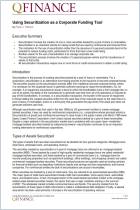Join getAbstract to access the summary!

Join getAbstract to access the summary!
David F. Babbel and Frank J. Fabozzi
Investment Management for Insurers
Wiley, 1999
What's inside?
You may think you are an insider in insurance company corporate finance, but if you want to take the final exam, here is your textbook — an entire faculty of experts wrote it just for you.
Recommendation
David F. Babbel, a professor of insurance and finance, and Frank. J. Fabozzi, a professor of finance, compiled Investment Management for Insurers, an extensive series of articles (including six they wrote) on managing investments. Various experts contributed the other two-dozen plus articles. The book, which is organized in sections based on major investment management topics, focuses first on general insurance issues, such as risk management and setting up a performance management system for insurers. Subsequent articles cover fixed income products, valuation, equity portfolio management and measuring and controlling interest rate risk. This highly technical book may not be sexy, but it is very sophisticated and fully accessorized with tables, charts, graphs, mathematical formulas and footnotes. Let’s be clear: it’s a book for pros, an in-depth compilation that getAbstract.com recommends to professional and academic specialists in insurance investment management.
Summary
About the Authors
David F. Babbel, a Professor of Insurance and Finance at the University of Pennsylvania’s Wharton School since 1985, previously taught at the University of California at Berkeley. He served as Vice President of Insurance and Pension at Goldman Sachs and was the Senior Economist at the World Bank. He has published extensively on insurance-related subjects. Frank J. Fabozzi, editor of the Journal of Portfolio Management, teaches finance at Yale University’s School of Management and previously taught at M.I.T. He consults on fixed-income investments and derivatives.























Comment on this summary